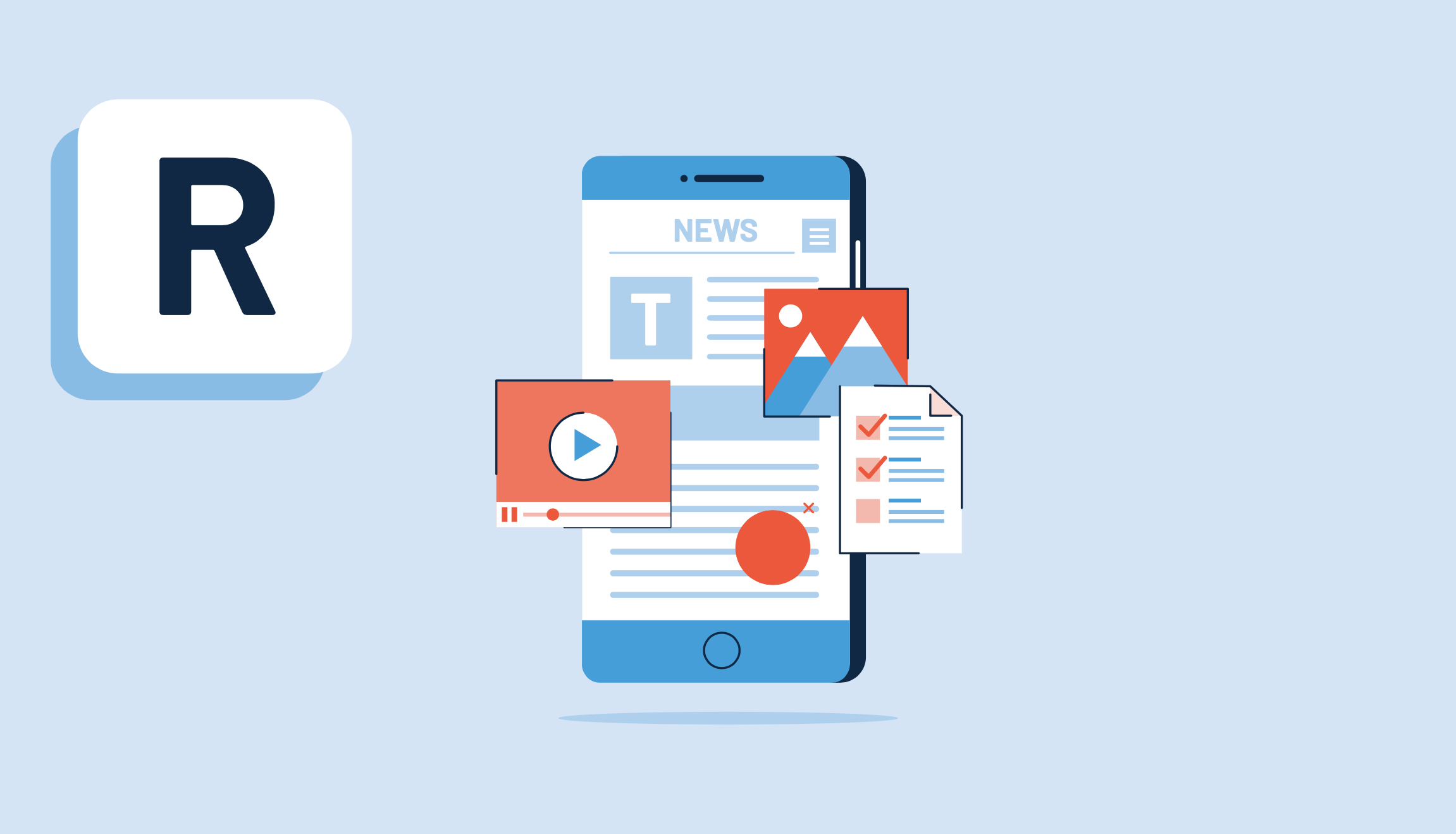What is rich media?
Rich media is a term for digital advertisements that use complex elements to catch attention and encourage interaction. Rich media ads implement these advanced elements to elevate how virtual advertisements are created and manipulated. The ads combine features like video, sound, location, and expansion to keep users engaged.
Companies use unique digital advertising tools within creative management platforms to build rich media ads and analyze their performance. Creative management platforms also include features like built-in design functions, collaborative solutions, access to multichannel publishing, and marketing campaign data analysis.
Types of rich media advertisements
Different types of rich media serve different purposes, depending on the good or service advertised. All these types are beneficial in making users stop and spend more time on ads.
- Interstitial ads are highly interactive full-page ads. They can include elements of other media types, like banners and videos.
- Video ads are the most identifiable rich media ads. They use moving images and sometimes sound to attract attention.
- Multi-directional expanding ads sit on one side of a webpage and expand when users interact with it.
- Banner ads stay in place and are the least complex rich media ad. They are also the most common because they are the easiest to create.
- Pushdown ads act as teasers until users interact with them, and take over a portion of the page to show the entire ad.
- Lightbox ads are also teasers that are initially small. But when a user interacts with them, the webpage dims and the full ad plays.
- Slider ads are usually placed at the corner of the site and follow the user as they move around the page.
Benefits of rich media
Using rich media the right way will ultimately improve how users perceive and interact with advertising. The benefits below highlight other ways that rich media elevates company advertising.
- Increase interaction by giving users a memorable experience.
- Advertise in a bigger way, literally. Rich media ads give companies more space to work with.
- Improve brand awareness by making potential customers take notice.
- Gain user analytics insights by tracking how users interacted with different elements of the ad.
- Expand reach and target different audiences by curating unique rich media ads to fit messaging on different platforms.
- Get more creative by pushing the limits of standard ads and implementing innovative features.
- Enhance the user experience by learning from user behavior and editing ads to give users what they want.
How to measure rich media ad performance
The points below explain the different data analytics that can help determine how rich media ads perform and what needs to change to improve their performance.
- Impressions: the number of times the ad was shown on the page
- Views: the number of times users saw the ad
- Engagement rate: the percentage of interactions per impression or view
- Reach: the number of unique people that saw the ad
- Dwell rate: the percentage of time that users actively spent on the ad
- Interaction time: the average amount of time a user interacts with the ad
- Expansion rate: the percentage of ad expansions per impression or view
- Completion rate: the rate at which users finish watching or interacting with the ad
- Click-through rate: the rate at which users click on the ad and are redirected
- Conversion rate: the rate at which ad visitors follow the call-to-action
- Revenue: how much money was made because a customer visited the site directly from an ad
Rich media ads vs. standard display ads
Rich media is known for attracting attention in new and unique ways. Because of this, rich media ads greatly differ from the standard display ads seen every day.
Standard display ads are simple, only include basic text and graphics, and support .html, .gif, .png, or .jpg file formats of 200 KB or less. Rich media ads are normally a lot larger in file size, often exceeding 200 KB, and offer way more customization options.
Standard display ads cannot incorporate rich media features like sliders and lightboxes, and they only have one interaction point, whereas rich media offer many areas for the target audience to interact with.
For example, clicking a standard display ad will simply bring the user to the intended page. Clicking on a rich media ad can create different interactions like expanding, pausing, or moving around.

Alexandra Vazquez
Alexandra Vazquez is a Senior Content Marketing Specialist at G2. She received her Business Administration degree from Florida International University and is a published playwright. Alexandra's expertise lies in writing for the Supply Chain and Commerce personas, with articles focusing on topics such as demand planning, inventory management, consumer behavior, and business forecasting. In her spare time, she enjoys collecting board games, playing karaoke, and watching trashy reality TV.




















